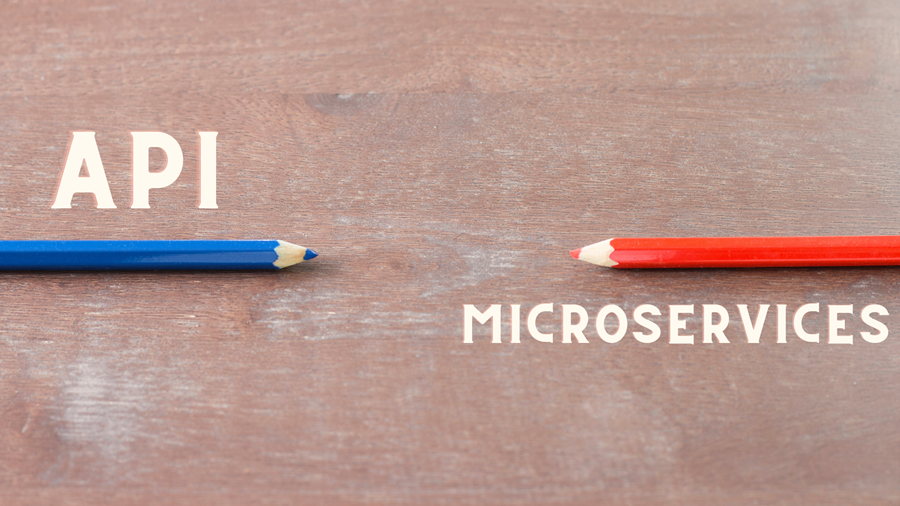Differences between Microservices and APIs
If you are new to programming, then you would have probably heard these two terms while discussing software design and integrations. Both these concepts are pretty important in today's online application development and design.
However, it's critical to understand the distinctions between these two, as well as how they're used. This will ensure that you have more fruitful interactions with others and have a deeper understanding of the apps you use. So without much further ado, let’s begin this post.
Table of contents
- What is an API?
- What are APIs used for?
- What is a Microservice?
- Why use a Microservice Architecture?
- Microservices vs APIs: Key Differences
- Conclusion
What is an API?
An Application Programming Interface, or API, is a component of a program that allows it to connect with other programs. An API, in more technical terms, is a set of protocols and procedures that describe how two programs share and alter data.
APIs are essential in today's digital infrastructure because they allow for standardized and efficient communication across apps with varying functions and structures.
External developers can access some portions of an application's backend without needing to understand how everything works inside the app thanks to an API that lies between the software's fundamental components and the public. This is what distinguishes an API as a programming interface.
What are APIs used for?
APIs are used by everyone who uses software. Assume you're doing online shopping and are about to check out. You see that the store you're visiting allows you to pay using ParPay, a payment processor, and you already have a ParPay account with your payment information set up.
Because ParPay is a separate firm from the store you're presently visiting, an API allows the store and ParPay to communicate. Firstly, the store requests your payment details via ParPay's payment gateway API. The ParPay API then gathers the request, verifies it, pulls data from its client database, and delivers it back to the retailer. Finally, the store completes the transaction by using your card details. Your store gets all of the information it needs to complete your checkout thanks to ParPay, without having to access ParPay's private database or requiring you to leave the store website.
Exchanges like these happen practically every time when two different programs collaborate. For example -
- A navigation app accessing a public transit system's API for real-time transportation data
- A travel website using an airline's API to access flight times and prices
- A website using one of Google's and/or Facebook's APIs to allow social login
What is a Microservice?
Microservices are a type of software architecture that breaks down an application's various operations into smaller ‘services’. Individual services for user account management, interfaces with online merchants, and user authentication may make up the microservice architecture for an app like ParPay. Within the broader system, each service functions as its own small piece of software.
Each service within the bigger microservices is always allocated one task, but the app's developers determine the scope of these tasks. ParPay is an example of a basic software application that relies on a few services. Alternatively, a huge software company's application could be made up of hundreds of granular services with extremely precise capabilities.
Why use a Microservice Architecture?
To comprehend why microservice architecture is advantageous to software engineers, we must first comprehend the monolith architecture.
Instead of delegating separate duties to different self-contained services, a monolithic application handles all of the application's functions using a single program.
It may seem logical to begin constructing an application in this manner because most think why to create several applications to deal with. As the capability and complexity of their application expand, advocates of the monolith will run into problems. It's tough to program and deploy updates, keep track of changes, discover problems, delegate work to developers, and generally understand the code when all aspects of an application are crammed into one program.
To put it another way, everything inside the monolith is so intertwined that it can be difficult to unravel. As a result, a new sort of architecture was required, resulting in the rise of microservices. Microservice architecture outperforms monolithic architecture in the following sections:
- Updates
- Simplicity
- Team Organization
- Security
- Robustness
- Flexibility
Microservices vs APIs: Key Differences
So, what exactly are the distinctions between microservices and APIs? A microservice is a design that divides a typically big application into multiple smaller, self-contained services. Whereas an API is a contract that specifies how a customer can utilize a service.
In a nutshell, an API acts as a contract for interactions between microservices, allowing them to communicate with one another.
Here is a summary of the differences -
Microservice
- Microservice is a component
- More APIs can be exposed via microservices.
- APIs aren't exposed by all Microservice components.
- Microservices are small applications.
- Microservices are easy to set up.
APIs
- APIs are an interface.
- APIs are one method for creating and exposing microservices architecture.
- Microservices architecture differs from API architecture.
- In sophisticated implementation instances, APIs re substantial in size.
- APIs require more time to develop than Microservices.
Conclusion
Leading software firms — Amazon, Netflix, and Spotify — have embraced the microservices strategy during the last decade. Sure, their implementations are more complicated, but the essential premise is the same: breaking down an application's tasks into software subcomponents, simplifying everything, while APIs connect it all.
